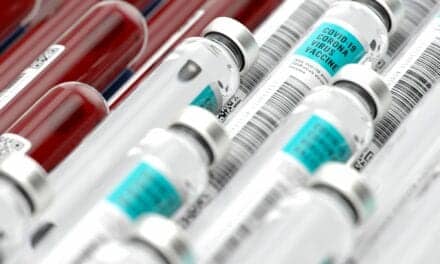Hospitals facing a growing population of COVID-19 cases need a coordinated approach with a multidisciplinary team to increase efficiency, conserve PPE and protect staff, according to healthcare workers from Weill Cornell Medicine and New York-Presbyterian/Weill Cornell Medical Center.
In “Hospital Preparedness for COVID-19: A Practical Guide from a Critical Care Perspective,” published online in the American Journal of Respiratory and Critical Care Medicine, experts from Weill Cornell Medicine and New York-Presbyterian/Weill Cornell Medical Center share their roadmap for meeting challenges posed by the pandemic, including an influx of critically ill patients.
As one of the nation’s largest academic medical centers, Weill Cornell Medicine and New York-Presbyterian/Weill Cornell Medical Center has a highly experienced team of specialists and robust resources, and physicians there used early lessons from existing data to help plan for a surge.
More than anything, hospitals should plan early, said Lindsay Lief, MD, lead author of the guide and medical director of the medical intensive care unit at New York-Presbyterian/Weill Cornell Medical Center, and assistant professor of clinical medicine at Weill Cornell Medicine.
“Plan early for beds, equipment and people. Listen to predictions from epidemiologists about the numbers to expect. Plan for daily remote communications platforms. Support front line staff. Food, scrubs, hand lotion, mental health support—it all counts.”
The authors wrote, “Given rapidly evolving data on the infectiousness of COVID-19, including from asymptomatic or paucisymptomatic patients, initial highest priorities included obtaining an adequate supply of personal protective equipment (PPE) for the staff and evaluating/expanding intensive care unit and ventilator capacity, among numerous other measures.”
“Although having appropriate PPE has been a concern for all health care personnel across the country during the COVID-19 crisis, Weill Cornell Medicine and NewYork-Presbyterian/Weill Cornell worked diligently to provide adequate PPE to protect our staff,” Dr. Lief said. “In addition, as a hospital that regularly provides specialized, complex care, we have incredible resources as far as nurses, respiratory therapists and physicians in diverse specialties.”
Dr. Lief and her colleagues, with the support of medical center administrators, called upon those resources to care for COVID-19 patients. The usual protocols were amended to expedite training of clinical staff to care for patients with acute respiratory distress syndrome, a disorder characterized by a build-up of fluid in the air sacs of the lungs, which deprives the body’s organs of oxygen. Physicians (including residents and fellows), nurses, respiratory therapists, as well as essential non-clinical staff began sharing responsibilities.
Critical care doctors needed help and got it. “For example, physical and occupational therapists have incredible expertise,” said Dr. Lief. “But when there aren’t a lot of patients well enough to exercise, we collaborated with them to make a ‘proning team’ using their expertise on body positioning with the patients we have to flip on to their bellies to increase their oxygen levels.”
The bottom line: “We learned that daily, clear communication is key, especially in a rapidly changing environment where we are learning more every day,” noted Dr. Lief. “Hospital communication regarding infection prevention and control, PPE, state and CDC guidelines provides not only information but relieves staff anxiety. In addition, daily phone conferences among physicians caring for patients with COVID helps remind us of the essential and ideal care for respiratory failure and to put in context what we are learning from colleagues around the world and new research as it comes to light.“










